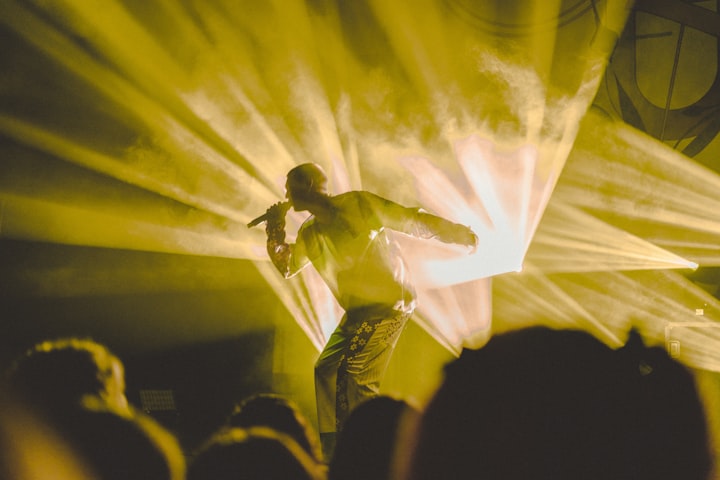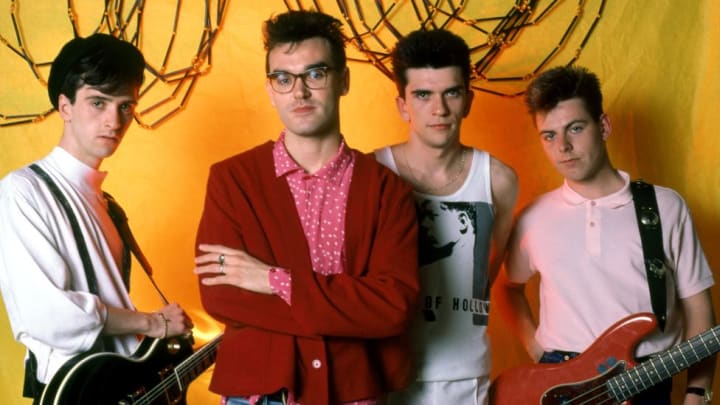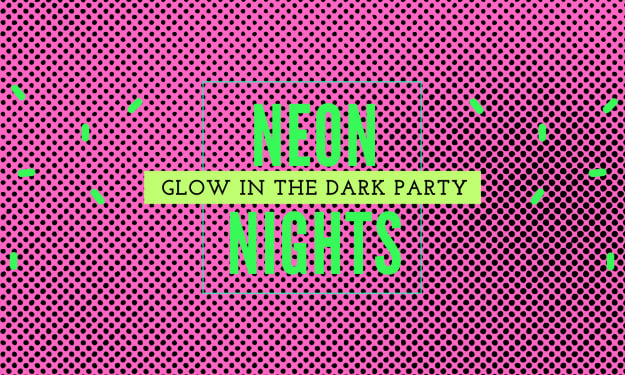Top 10 Influential Artists Who Were Never U.S. Chart Toppers
And Why

In the world of music, you don't have to crack the top of the charts to be influential (though, let's face it, it doesn't hurt). In fact, some of the most influential music acts either never charted at all or rarely made it to the Top 40 in the United States. Only a few artists on this list eventually became successful in their own right decades later or, in one case, posthumously, but they all either influenced other musicians or charted new paths in musical genres without becoming major U.S. chart toppers.
10. Lee "Scratch" Perry

Known as Little Lee Perry, Scratch Perry or the Upsetter, Lee Perry is the don of Jamaican music, whether it be reggae, dub, or dancehall. As a producer and recording artist, Perry influenced countless musical acts in Jamaica, helped developed Bob Marley and the Wailer's signature reggae sound, and invented the new sound of dub through his inventive use of technology, such as drum machines and phase shifters. Known for his love of superhero comic books and crazy behavior (he supposedly burned down his recording studio in 1980), Perry scored hits like "Station Underground News" and "Roast Fish and Corn Bread" in Jamaica and the U.K., but he rarely charted in the United States. However he did influence American artists the Beastie Boys, with whom he followed on their U.S. tour in 1997. Perry is also widely acknowledged as a major influence on trip-hop and electronica.
9. Mc5

Also known as the Motor City Five, this Detroit band's claim to fame is for their performance at the 1968 anitwar protests outside the Democratic National Convention in Chicago, where lead singer, Wayne Kramer, screamed "Kick out the jams, motherfucker," before the band kicked into the title song off their debut album.
Though their live-recorded album on the Elektra label made it to #30 in 1969, MC5 was largely a commercial flop. And, of course, Elektra's mostly conservative record execs were tickled pink with their radical left leanings, which included an alliance with John Sinclair and his White Panther Party, incendiary lyrics, and in-your-face PR campaigns (when some stores refused to stock their album, the band taped Elektra stationary on the store's window with the words "Fuck you!" written on them).
After Sinclair was arrested and sent to jail on trumped up marijuana charges, the band managed to get a record deal at Atlantic, only to get dumped again after their critically praised second album "Back in the USA" didn't spark a revolution against the man. A stint in England failed to get them back on track, and the band eventually broke up.
Yet MC5's influence on music was already set in stone. Their hard rock sound helped usher in punk rock, influencing other punk revolutionaries like Iggy Pop, Patti Smith and the Ramones. They also influenced alternative rockers like Kurt Cobain and Sonic Youth, who'd taken their name from bandmember Fred "Sonic" Smith.
8. The Smiths

As a band, The Smiths seem so ubiquitous that it's hard to believe they never charted the U.S. Top 40. Their songs can be heard in everything from TV commercials to movie soundtracks. Yet during their heyday, America never had much use for the Smiths, which might have had something to do with lead singer Morrissey's witty, albeit, whiny lyrics in songs like "Heaven Knows I'm Miserable Now," "Girlfriend in a Coma" and "How Soon is Now."
Formed in 1982 by Morrissey and lead guitarist Johnny Marr, the band from Manchester developed a rock sound that differed from the synthesizer-based songs of the British New Wave. Along with Morrissey's sharp, biting lyrics and on-stage (as well as offstage) eccentricities, and Marr's signature guitar riffs, their first album rose to #2 on the UK charts. More hits followed, cementing the band's status as trailblazers in Brit-pop. But a U.S. tour in 1986 was so disappointing that Morrissey laid down somewhere and cried. The band broke up a year later due to growing animosities.
Marr and Morrissey pursued separate musical careers that brought them various successes throughout the following decades. However, their greatest critical success came with the Smiths, who helped usher in the alternative rock and made it possible for British bands like Blur, Oasis, Pulp and Radiohead to embrace their Englishness. But the Smiths weren't totally ignored in the U.S. As Mikel Jollet of the L.A. band Airborne Toxic Event acknowledges: "They were my whole introduction to a world of smart, literate, coy people."
7. Nick Drake

This English folk singer/songwriter was known for his gentle, jazz-inflected style in signature tunes like "River Man," "Cello Song," and "Time of No Reply." During his lifetime, Drake never charted at all, either in the U.K. or the United States, yet his music would become highly influential. Artists such as Lucinda Williams, Robyn Hitchcock, Mark Eitzel and Belle and Sebastian hold a debt of gratitude for his work. Before he got the world to dance to his crocodile rock, Elton John recorded a few of Drake's songs in his 1969 demo, a copy of which he kept after he sold his extensive record collection for charity back in the '80s.
Drake himself was painfully shy and suffered from mental illness. When his career failed to take off, he slunk into a steep depression, moved back into his parents' home and became a recluse. In 1974, he passed away at the age of 26 from a drug overdose. For years, Drake's music was known only among a select few within the folk music scene, but by 2000, he became an unlikely household name when Volkswagen began using his haunting song "Pink Moon" in their ads. Since then, Drake has developed a sturdy and dedicated fanbase.
6. Roky Erickson

As the lead singer and songwriter for the 1960s band 13th Floor Elevators, Erickson scored a 1966 US hit with his song "You're Gonna Miss Me," which he penned for his previous garage band. With its swirling psychedelic riffs and Erickson's unearthly howls, "You're Gonna Miss Me" pioneered in psychedelic-rock. The Austen-based band was poised to ride the wave of the hippie movement, but was derailed after Erickson was arrested on marijuana charges. Local police had been gunning for Erickson because of his counterculture lifestyle, and wanted to make an example of him. After pleading to an insanity charge (Erickson developed signs of schizophrenia as a teen), he was sentenced to Rusk State Hospital, an East Texas mental institution for the criminally insane, where he suffered through shock therapy treatments.
Erickson was eventually released, but he was never the same. He spent decades in poverty, trying to survive on only monthly $200 Social Security checks, and surrounding himself with the white noise of TV and radio to drown out the voices in his head. Yet his music continued to inspire and influence countless musicians like Curt and Cris Kirkwood of the Meat Puppets, R.E.M., ZZ Top, Jesus and Mary Chain, and Dave Grohl of the Foo Fighters.
In 2000, Erickson's brother took him under his care, helping him get treatment for his illness and recouping the finances he was screwed out of by his lawyers. Erickson recorded new music, released retrospective albums, and performed at the South by Southwest music festival in his native Texas.
Erickson passed away in 2019.
5. Big Star

Big Star was never big on the pop charts, but they made a huge impact on other artists like R.E.M., Paul Westerberg of the Replacements (whose 1987 song "Alex Chilton" was about the Big Star lead singer), Teenage Fanclub, Jeff Tweedy of Wilco, and the Chills.
Formed in the early '70s by singer/songwriter Chris Bell, the original line-up for the Memphis-based band included Jody Stephens, Andy Hummel and Steve Ray. Chilton, who had a hit with his previous band The Box Tops, joined the group after Ray's departure. In 1972, Big Star recorded its debut album, #1 Record. The band's signature sound, with its power-pop grooves mixed with Beatlesque melodies, was ably demonstrated in such tunes like "Feel," "In the Street" and "Thirteen." While #1 Record received a positive critical response, it bombed with the record buyers.
Bell left the band shortly thereafter. Chilton, along with drummer Stephens and bassist Hummel, forged on and recorded Radio City in 1974, featuring Chilton-penned tunes "September Gurls" and "Back of a Car." Though Radio City was another hit with the critics, it also flopped. Their third record, Third/Sister Lovers, was essentially a Chilton solo effort.
Chilton later moved to New York where he recorded with various artists, but by the 1980s, he disappeared from the scene, only to reappear in New Orleans, where he performed cover tunes in local clubs and recorded R&B music. Bell recorded solo albums, but in 1978, he was killed in a car accident. His solo efforts were released posthumously in 1993. During the early '90s, Chilton and Hummel re-formed Big Star and toured every so often throughout the last two decades. In 2005, they released an album of new music, but, sadly, by the end of the decade, both Chilton and Hummel were dead from a heart attack and cancer respectively.

4. Love featuring Arthur Lee
The 1960s psychedelic band Love, fronted by singer/songwriter Arthur Lee, ruled the L.A. rock scene along with the Doors and the Byrds. Yet unlike their contemporaries, the band only achieved two minor hits with its Burt Bacharach cover "My Little Red Book," off their eponymous debut album, and the searing protopunk single "7 and 7 Is," off their 1966 Da Capo album.
Formed in 1965, with fellow members John Echols, Bryan Maclean, Ken Forssi and Michael Stuart, Love would become the first biracial rock band before Jimi Hendrix and the Experience and Sly and the Family Stone. They were also the first band that Elektra signed under their label (Lee was intrumental in getting the Doors signed to Elektra as well). Pioneerering the use of releasing "45" singles and devoting an entire album side to a single track on their second release, Da Capo, they ushered in a new way of formatting music.
Yet for much of its existence, Love was largely the band other bands loved. Though their 1967 album Forever Changes is widely considered a masterpiece, with its acid rock grooves and surrealistic flower-power lyrics, it was a flop both critically and commercially, leading to changes in line-up. Subsequent albums like "Four Sail" also did poorly. By the 1970s, Lee broke up the band and either recorded albums as a solo artist or with other bands he formed. By the 1990s, he fell into obscurity, which might have had something to do with the six years he spent in prison for a weapons charge. After his release in 2001, Lee had a brief revival in his career and toured with an orchestra to perform his "Forever Changes" album. Unfortunately, in 2006, he died from leukemia.
Lee and his former band may have been commercials failures, but Robert Plant, the Damned, who covered Love's "Alone Again Or" in the 1980s; Teardrop Explodes and Echo and the Bunnymen, couldn't have given a damn. The flamboyantly dressed Lee, who befriended Hendrix while on the chitlin circuit, can also claim to have influenced Hendrix's sartorial style.
3. Bad Brains

Formed during the 1970s, Bad Brains started out as a D.C. jazz fusion band under the name Mind Power. Inspired by the Sex Pistols, the Clash and Bob Marley, they changed their name to Bad Brains and started playing reggae and punk. Along with Black Flag and the Dead Kennedys, they put the "hardcore" into the late '70s and 1980s punk scene.
While the band recorded songs like "Pay to Cum", "Big Takeover" and "Sailing On" on ROIR cassettes, their greatest legacy was its live performances. The band played with a jackhammer speed and precision that floored fans and fellow punk rockers. As Village Voice writer Gregory Ironman Tate once wrote of their performance style: "…onstage the band's Scot-screeching front-man H.R. throws down like James Brown gone berserk, with a hyperkinetic repertoire of spins, dives, back-flips, and skanks."
The group recorded albums throughout the 1980s, including Rock for Light, I Against I and Rise. By the late 80s, however, it went through various line-up changes due to differing opinions about its musical direction. Lead singer HR (Paul Hudson) and brother Earl Hudson (drummer) wanted to play more reggae, while guitarist Dr. Know (Gary Miller) and bassist Darryl Jenifer wanted to continue their hardcore sound. Eventually, HR and Hudson left the band in 1989, while singer Israel Joseph-I and Mackie Jayson replaced them for their Rise release.
Through the '90s, the band continued to record and perform, with HR and Hudson back in the line-up, most notably on a tour with the Beastie Boys, but personal and legal problems often got in the way of their rise to success (they got bumped off the tour after HR was arrested for attacking the band's manager in Montreal, and then later for hitting a fan with a mic stand in Lawrence, Kansas). By the mid-90s, the band broke up, but would later regroup to form Soul Brains and record a dub album in 2002.
Bad Brains never made a dent on the U.S. charts, but their influences on punk rock and on artists like Living Color, the late Beastie Boy Adam Yauch, Kurt Cobain, Minor Threat and Scream were enough to make them hardcore legends.
2. The Ramones

Some claim punk rock started in Britain, but that's only because the Ramones took it there first when they toured in 1976. Their early tune "Sheena Is a Punk Rocker" peaked at #30 on the U.K. charts, while the Sex Pistols and the Clash took their stripped-down, aggressive style to heart. As Sid Vicious, bassist for the Sex Pistols, stated in Cream: "Even before I joined the Pistols I idolized the Ramones. Even if they do hate us. I don't care." Other rockers who didn't murder their girlfriends, like Green Day, Kurt Cobain, Arcade Fire and Metallica, also count the Ramones as huge influences.
Taking their name from Paul Ramon, a pseudonym Paul McCartney used when he was with the Silver Beatles, Joey, Dee Dee, Johnny and Tommy formed the Ramones in 1974 shortly after high school and began performing at New York's legendary CBGB's (Tommy would later leave to produce, while Marky took over his drum kit). They quickly won over fans with artistically sophisticated songs like "I Wanna Sniff Some Glue" and "Beat on the Brat," as well as with their intense live performaces. A recording contract with Sire Records soon followed, where they recorded Ramones, Leave Home and Rocket to Russia, all featuring songs that rarely clocked more than two-and-a-half minutes. The Ramones never had a hit in the U.S., and the success of English bands who ripped off their sound had to hurt. But the band stuck to who they were, even through lineup changes over the years.
Forty years after their formation, the Ramones are more popular than ever, with their songs appearing on movie soundtracks and commercials. After his death in 2001, the U.S. Congress proclaimed May 19th Joey Ramone Day. A year later, the Ramones was inducted into the Rock and Roll Hall of Fame. Sadly, the last remaining Ramone, Tommy, passed away in 2014, ending one of the most iconic punk rock bands forever.
1. Iggy Pop and the Stooges

When Iggy Pop scored pop hits with 1986's "Real Wild Child" and his duet with the B-52's Kate Pierson in 1991's "Candy," it came as a surprise since most of his career at that point was hidden in the shadows by more popular acts like his friend David Bowie. But if Pop was suddenly in the mainstream, it was only because so many of the rock acts who were influenced by him had become popular.
Iggy Pop began life as James Osterberg in Muskegon, Michigan, where he formed various bands before briefly attending the University of Michigan. After a stint in Chicago, he changed his name and moved to Detroit in 1967 where he formed the Psychedelic Stooges, later shortened to the Stooges. During their debut performance in Ann Arbor on Halloween night, he rubbed his body with peanut butter and raw steaks, cut himself with broken glass, then screamed and did the first ever stage dive into the audience, all while playing some of the rawest, heaviest, most aggressive music anyone ever heard. In an era where hippies were going to San Francisco and putting flowers in their hair, it's any wonder why the Stooges weren't a hit.
After their first two albums (1967's The Stooges and 1970's Fun House) sunk like stones, their record label dumped them. The band broke up soon after due to drug problems. Pop, especially, spiraled into a drug haze before Bowie rescued him, helped him reform the group, now called Iggy Pop and the Stooges, and produced their classic album Raw Power. However, his star power wasn't enough for the band to gain commercial recognition and the band split up again.
Pop continued to deal with a heroin addiction, which included a stint in a mental institution, but recorded solo albums (1977's Lust for Life and The Idiot) and toured, often with Bowie. By the 1980s, his music began to earn some recognition when Bowie's cover of his song "China Girl" on his "Let's Dance" album became a hit. By the early 90's, Iggy Pop was cemented as the godfather of grunge.
Artists like Johnny Rotten, Henry Rollins, Nick Cave, Nirvana, Joan Jett, the Red Hot Chili Peppers, and Jack Black claim him as their rock and roll hero. Even fellow Detroiter, Madonna gave him props in 2008, when the Rock and Roll Hall of Fame failed to induct Iggy Pop and the Stooges yet again. Refusing to perform at the ceremony in protest, she sent the Stooges to sing hardcore versions of her song's "Ray of Light" and "Burning Up" instead.
Cynthia C. Scott is the author of The Book of Dreams, The Naxos Academy of Psychic Studies for Colored Girls, Immortal, My Love, and The Haunted Child. Her short story, "Ruby's Paradox," was the 2018 Fairfield Writing contest winner, which appears in Here to Now: A Time Travel Anthology. She is also the author of numerous essays, reviews, articles, and short stories published in various publications such as Strange Horizons, Fiyah Magazine, and her own substack newsletter, The Portal.





Comments
There are no comments for this story
Be the first to respond and start the conversation.